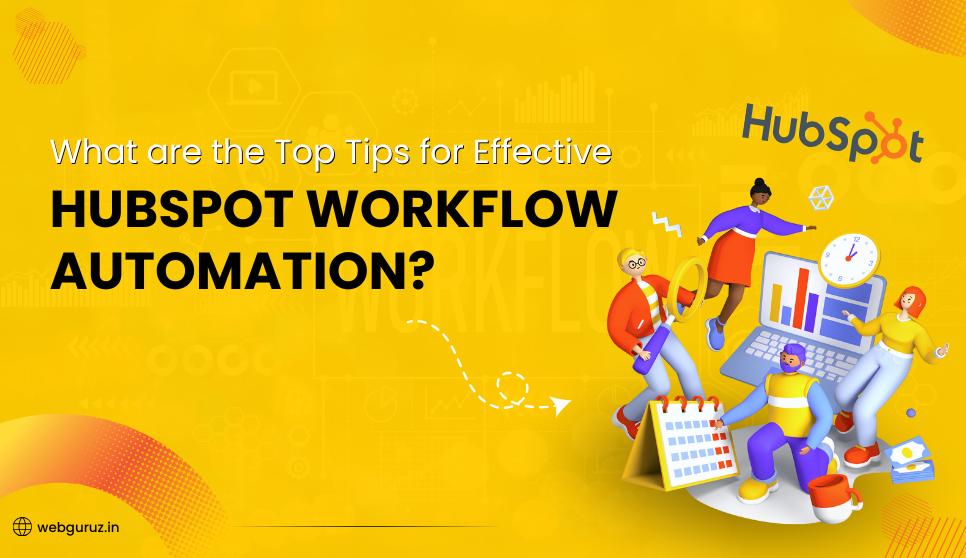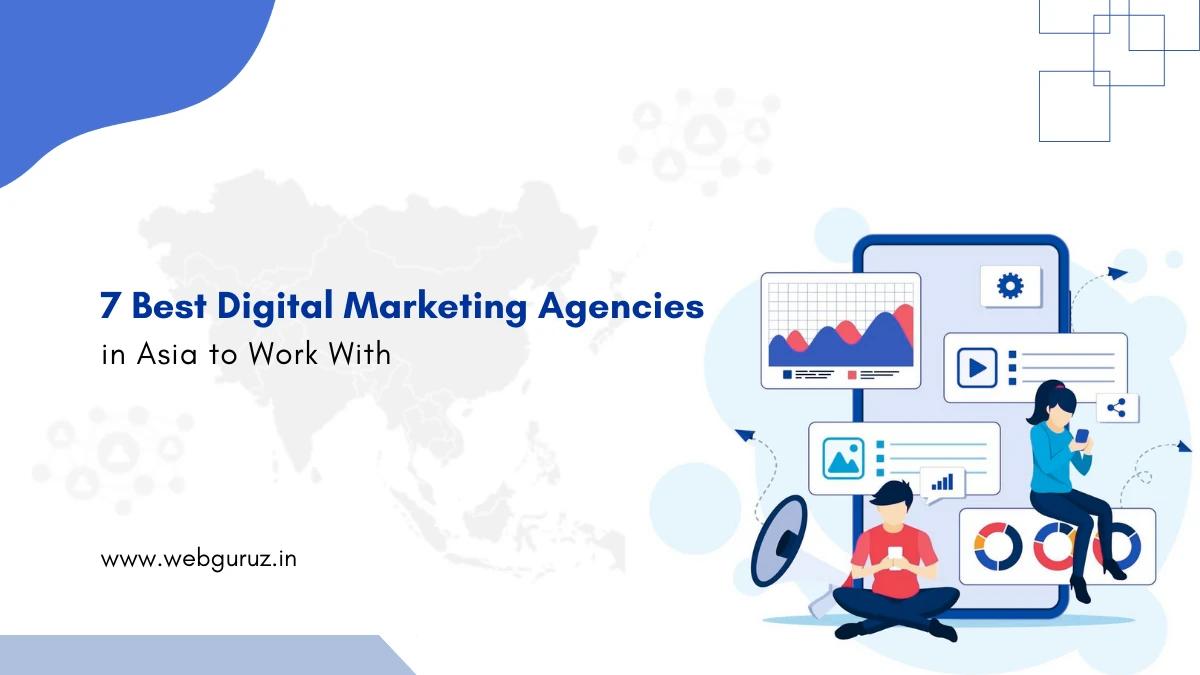Mohit Bhatt
2025-08-22
7 min read
7 Best Digital Marketing Agencies in Asia to Work With
Finding the right digital marketing agency for your business can feel like searching for a needle in a haystack.
Read More
HubSpot Workflow Automation is a game-changer for businesses looking to streamline their operations and improve efficiency. By automating repetitive tasks, personalizing customer interactions, and optimizing marketing strategies, businesses can achieve remarkable results. However, to get the most out of HubSpot automation services, you need to approach it strategically. Here are the top tips to ensure your HubSpot CRM workflows are both effective and impactful.
Workflow automation refers to the process of using software to automate manual, repetitive tasks and processes. In the context of HubSpot, workflow automation involves setting up rules and triggers to manage tasks such as email follow-ups, lead assignments, and customer onboarding. This helps businesses save time, reduce errors, and ensure consistent communication with their audience.
Workflow automation can be categorized into several types based on their functionality:
By leveraging these types of automation, businesses can create a cohesive and efficient operational framework.
Workflow automation is widely adopted across industries due to its significant benefits. Studies show that nearly 80% of top-performing companies use marketing automation tools, including HubSpot. Additionally, businesses that utilize sales automation report a 14.5% increase in sales productivity and a 12.2% reduction in marketing overhead (Report by Nucleus). These numbers underscore the importance of implementing robust automation strategies to remain competitive.
Before diving into HubSpot automation, clearly define your objectives. Are you looking to improve lead nurturing? Simplify sales processes? Enhance customer support? Identifying your goals will help you create workflows that align with your business needs. For instance, if your goal is to increase conversions, focus on workflows that guide prospects through the sales funnel with timely and relevant communications.
To build effective workflows, you need to understand your customers’ journey. Break it down into stages, such as awareness, consideration, and decision-making. Use HubSpot’s tools to track customer interactions and identify common touchpoints. This data will help you create workflows that cater to your audience’s specific needs and preferences.
Segmentation is crucial for delivering personalized experiences. Divide your contacts into groups based on demographics, behaviors, or preferences. HubSpot CRM automation allows you to set up workflows tailored to each segment. For example, you can send targeted email campaigns to prospects who have visited specific product pages or abandoned their shopping carts.
Lead scoring is a powerful feature in HubSpot that helps you prioritize high-quality leads. Assign scores based on actions like email opens, website visits, or form submissions. Once a lead reaches a certain score, trigger workflows that notify your sales team or send personalized follow-ups. This ensures that your team focuses on the most promising opportunities.
HubSpot offers a variety of pre-built workflow templates for common tasks, such as lead nurturing, onboarding, and feedback collection. These templates can save you time and provide a solid starting point. Customize them to suit your specific requirements and branding.
Email automation is a cornerstone of HubSpot marketing automation. Ensure your emails are engaging, concise, and action-oriented. Use A/B testing to determine the best subject lines, content, and calls to action. Additionally, schedule emails based on your audience’s time zones and behaviors to maximize open and click-through rates.
HubSpot seamlessly integrates with various third-party tools, such as e-commerce platforms, social media channels, and analytics software. Leverage these integrations to enhance your workflows. For example, connect your e-commerce platform to HubSpot to automate order confirmations, abandoned cart reminders, and post-purchase follow-ups.
Automation is not a set-it-and-forget-it solution. Regularly review your workflows to ensure they’re still relevant and effective. Use HubSpot’s analytics to track performance metrics, such as email open rates, conversion rates, and deal closures. Make adjustments based on the insights you gather to continuously improve your automation strategies.
Data privacy is a critical aspect of any automation strategy. HubSpot provides tools to help you comply with regulations like GDPR and CCPA. Use features such as consent tracking and data encryption to safeguard customer information. Always ensure that your workflows respect user preferences and provide opt-out options.
If you’re new to HubSpot or need advanced customization, consider working with a HubSpot consultant or developer. These experts can help you design complex workflows, integrate third-party tools, and troubleshoot issues. Their expertise ensures that you get the most out of HubSpot automation services.
Effective HubSpot workflow automation requires careful planning, regular monitoring, and a focus on personalization. By following these tips, you can create workflows that streamline your operations, enhance customer experiences, and drive business growth. Whether you’re leveraging HubSpot CRM automation, HubSpot consulting services, or working with a HubSpot developer, the key is to continuously adapt your strategies to meet evolving business needs.

Mohit Bhatt
2025-08-22
7 min read
Finding the right digital marketing agency for your business can feel like searching for a needle in a haystack.
Read More
Mohit Bhatt
2025-08-20
7 min read
Choosing the right HubSpot Hubs for your business can feel overwhelming, especially when you’re looking at multiple options that seem to overlap in functionality.
Read More
Mohit Bhatt
2025-08-11
7 min read
Google’s AI Overview has changed how people search and find information online.
Read More